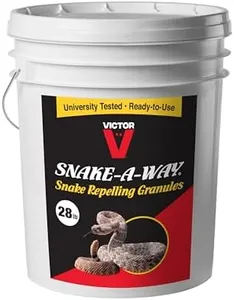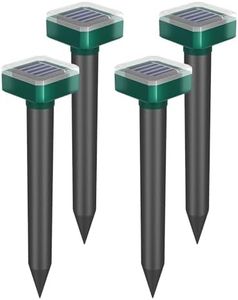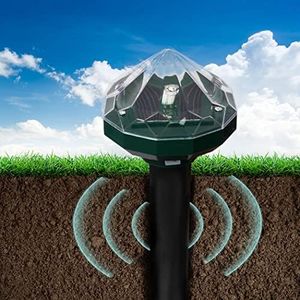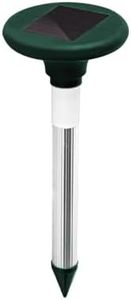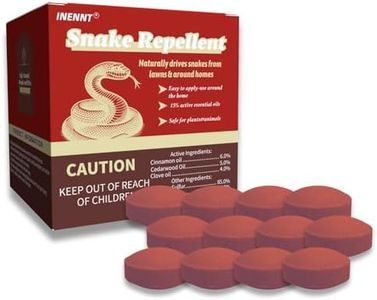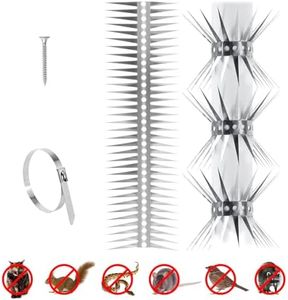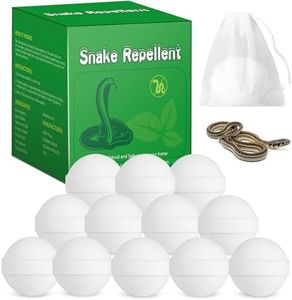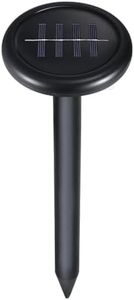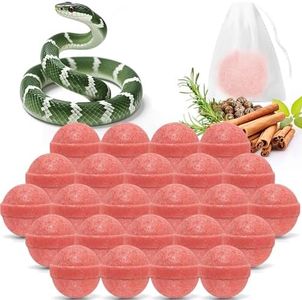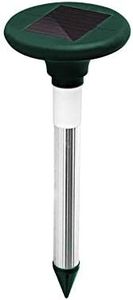We Use CookiesWe use cookies to enhance the security, performance,
functionality and for analytical and promotional activities. By continuing to browse this site you
are agreeing to our privacy policy
10 Best Snake Deterrents
From leading brands and best sellers available on the web.Buying Guide for the Best Snake Deterrents
Choosing the right snake deterrent is all about understanding your specific needs and the environment you're looking to protect. Whether you want to keep snakes away from your garden, yard, campsite, or even under the house, snake deterrents work by either physically blocking snakes or using scents, sounds, or vibrations that discourage them from entering an area. To find the best fit, consider factors such as the area you're covering, the type of deterrent that works best for your climate and surroundings, and how often you want to maintain or replace the product. Familiarize yourself with the key features to choose an option that matches your lifestyle and peace-of-mind needs.Deterrent TypeThe type of snake deterrent you choose is crucial because it determines how snakes are kept away from your property. There are physical barriers like mesh or fencing, scent-based repellents made from essential oils or chemicals, and electronic deterrents that emit vibrations or sound waves. Physical barriers are usually most effective for long-term prevention, especially in high-risk areas. Scent-based and electronic options are easier to install but may require regular maintenance. If you want a set-and-forget solution, barriers might suit you, while others might prefer the convenience of granules or devices that can be moved as needed.
Coverage AreaCoverage area tells you how much space a single unit or pack can protect. This is important so you don’t underestimate or overbuy for your needs. Some deterrents only cover a few square meters, while others, like electronic repellents, claim broader coverage. You should measure the area you want to protect and pick a deterrent that matches or slightly exceeds it. For larger areas, physical barriers or multiple units may be necessary, while small gardens or entry points might need just one solution.
Effectiveness DurationEffectiveness duration means how long the deterrent continues to work after you’ve set it up. Some repellents might last only a few weeks before reapplication is needed, especially after rain, while physical barriers are more permanent. In areas with heavy rainfall or sun exposure, some repellents degrade faster. Always consider how frequently you are willing to maintain or reapply the product based on your routine and local weather conditions.
Safety for Pets and HumansSafety is a top concern if you have pets, children, or frequently visited paths in your yard. Some chemical repellents can be harmful if touched or ingested, while others use natural ingredients that are considered non-toxic. Physical barriers and most electronic deterrents are generally safe but can pose minor risks if mishandled. Always check the safety ratings and avoid products that could endanger your family or animals.
Weather ResistanceWeather resistance describes how well a deterrent holds up against wind, rain, sun, and temperature changes. Physical barriers should be sturdy enough not to rust or break, while repellents should stay effective through rain or heat. Electronic devices require protection from moisture and dust. If you live in an area with harsh or changing weather, look for deterrents designed to last outdoors and remain effective in your climate.
Ease of Installation and MaintenanceEase of installation and maintenance matters if you want a hassle-free experience. Physical barriers may require tools and setup time, scent-based deterrents are usually quick to sprinkle or spray, and electronic devices often only need to be placed and switched on. Maintenance includes checking batteries, reapplying repellents, or cleaning physical barriers. If you prefer minimal effort, choose a deterrent that matches your willingness and ability to keep it working over time.
